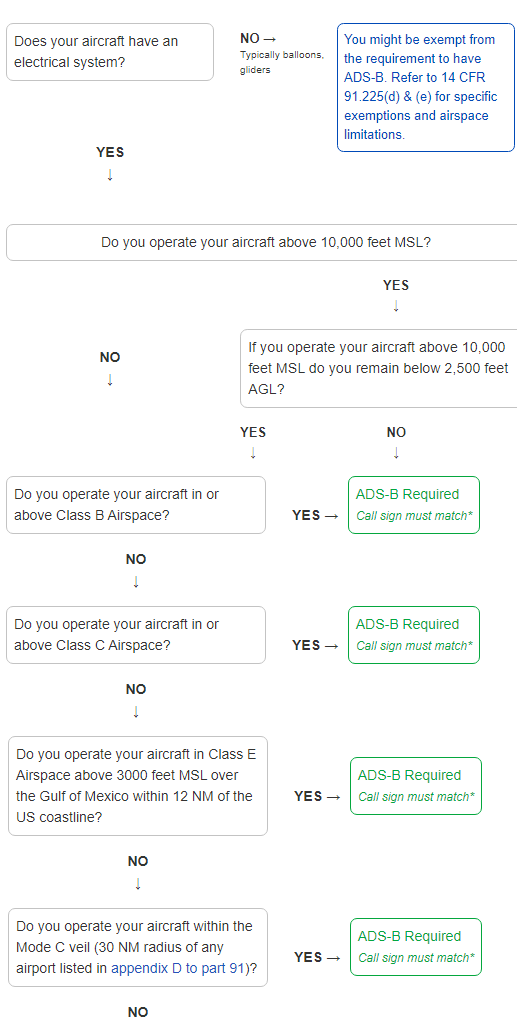New Regulations for Automatic Dependent Surveillance-Broadcast in 2020
As the FAA moves from a radar-based ATC system to a satellite-based aircraft monitoring system, new ADS-B Out avionics are required for all new & existing aircraft to meet new regulations for the upcoming year.
Beginning January 1, 2020, aircraft must be equipped with ADS-B Out to fly into most controlled airspace in the United States. This is expected to heavily impact the private jet market for both aircraft owners and charter operators, as all current aircraft must be upgraded with new equipment to become ADS-B compliant.
Airlines, along with several charter operators, have already made the transition over the past few months to ensure compatibility with the new rules.
Looking to find out what these rules mean? Check out more information below.
What is ADS-B?
ADS-B stands for Automatic Dependent Surveillance-Broadcast. It’s a type of surveillance technology which allows an aircraft to determine its position via satellite navigation and broadcast it periodically, enabling it to be tracked.
The data can be received by air traffic control ground stations as a replacement for secondary surveillance radar, as no interrogation signal is needed from the ground. It can also be received by other aircraft to provide situational awareness and allow self separation.
“Automatic” stands for requiring no pilot or external input, while it’s “dependent” in that it relies on data from the aircraft’s navigation system. It is claimed that moving the nation to this satellite-derived aircraft location system will make radar-based ATC obsolete, making ADS-B compliance an integral part of NextGen ATC systems.
What are the new requirements?
The new requirements are determined based on the class of airspace an aircraft operates in. Check the FAA-provided graph below for more details.
| Airspace | Altitude |
|---|---|
| Class A | Require for All Aircraft |
| Class B | Generally, from surface to 10,000 feet mean sea level (MSL) including the airspace from portions of Class Bravo that extend beyond the Mode C Veil up to 10,000 feet MSL (e.g. SEA, CLE, PHX) |
| Class C | Generally, from surface up to 4,000 feet MSL including the airspace above the horizontal boundary up to 10,000 feet MSL |
| Class E | Above 10,000 feet MSL over the 48 states and DC, excluding airspace at and below 2,500 feet AGL |
| Over the Gulf of Mexico at and above 3,000 feet MSL within 12 nautical miles of the coastline of the United States | |
| Mode C Veil | Airspace within a 30 NM radius of any airport listed in Appendix D, Section 1 of Part 91 (e.g. SEA, CLE, PHX) from the surface up to 10,000 feet MSL |
Table Source: FAA.gov
Any airspace that requires the use of a Transponder today will on January 01, 2020 also require aircraft to be equipped with a Version 2 ADS-B Out system. This can be either a 1090ES (DO-260B) ADS-B system or a UAT (DO-282B) ADS-B system.
For aircraft operating above FL180 (18,000 ft.) or to comply with ADS-B mandates outside the United States, you must be equipped with a Mode-S transponder-based ADS-B transmitter. For aircraft operating below 18,000 ft. and within the United States ADS-B rule airspace, you must be equipped with either a Mode-S transponder-based ADS-B transmitter or with UAT equipment.
Do I need to update my equipment?
The FAA has created the following flow chart to determine if your aircraft meets the new ADS-B regulations for 2020. You can search also search the FAA’s database of aircraft models and their approved equipment.

What if I DO NOT want to upgrade my equipment?
There are many private planes across the United States with a pre-owned value only 5x the cost of upgrading their aircraft for the new tracking standards.
For owners & operators who prefer to NOT make this upgrade, their aircraft will essentially become grounded and unable to legally operate in United States airspace.
If you’re looking to sell your plane instead of making the switch, or if you’re not sure what to do moving forward with your aircraft, speak with one of our advisors at +1 (888) 987-5387 and review your options.
More Information
For more details regarding the new FAA regulations for ADS-B, please visit the Federal Aviation Association’s official website: https://www.faa.gov/nextgen/equipadsb/.

